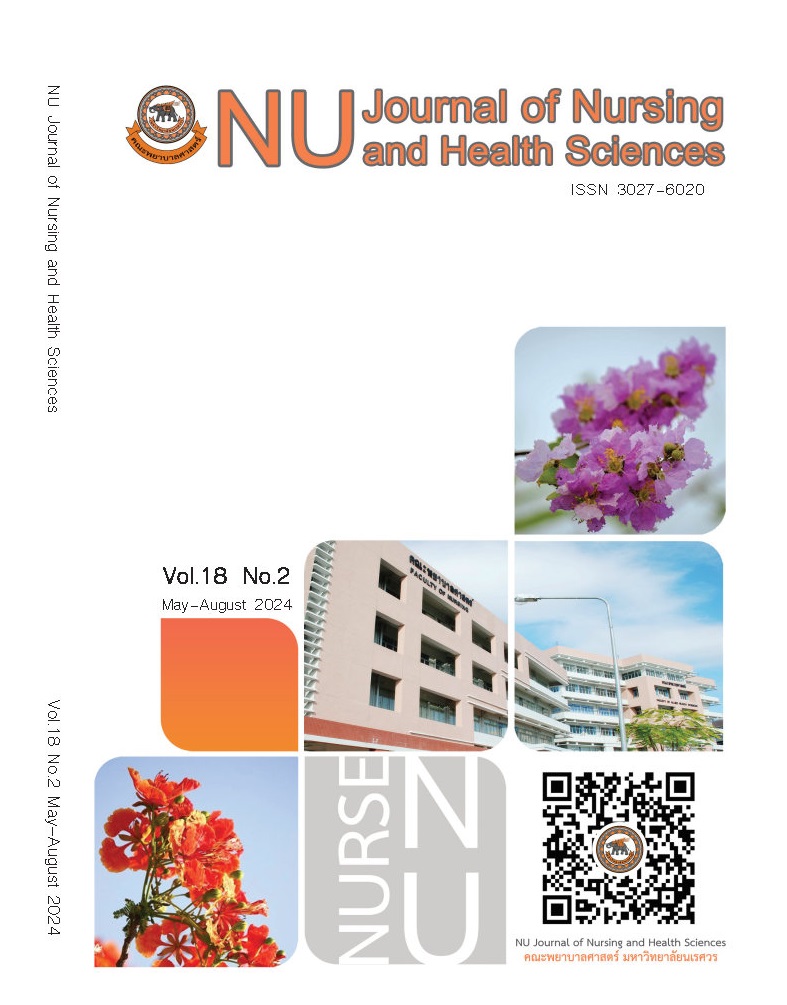Effects of the Cancer Patient Information Referral Program for Treatment with LINE Official Account on Rate of Patient Hospitalization and Quality of Usage of the Fifth Health Region Cancer Network Nurses
Main Article Content
Abstract
The quasi-experimental research aimed to study the effects of the cancer patient information referral program for treatment with line application on rate of patient hospitalization and quality of line application usage of the fifth health region cancer network nurses between the experimental group and the control group. The sample group was professional nurses on duty to pass information on cancer patients and new case of cancer. The sample size was calculated for 60 people, divided into an experimental group of 30 people and a control group of 30 people, by using a purposive sampling. Research instruments used was the cancer patient information referral program for treatment with line application account were on the quality of line application account usage of the record form on rate of patient hospitalization from HOSxP program. The content validity index was 0.94 and the Cronbach's alpha coefficient was at 0.92. The data was analyzed by descriptive statistics and Paired t-test, independent t-test and Chi-square The results showed that 1) The experimental group had the mean scores usage for line application after participating the cancer patient information referral program was higher than before the control group statistically significant (p<.05). The mean of the experimental group was at the high level ( = 4.38, S.D. =.36). The mean of the control group was at the moderate level ( = 3.23, S.D. =.24) 2) The experimental group was patient hospitalization rate of higher than the control group statistically significant (p<.05) and 3) The control group had patient hospitalization rate of after experimental group higher than before the experimental group statistically significant (p < .05). The research shows that the Cancer Patient Information Referral Program for Treatment can help the patient's entire treatment to fast. The research shows that the executives of the provincial public health officer should apply the patient information referral program as a guideline for the development of a data coordination system for patients between the hospital network of health districts to be more efficient. It can be a guideline for applying the network referral system in other chronic diseases.
Article Details

This work is licensed under a Creative Commons Attribution-NonCommercial-NoDerivatives 4.0 International License.
References
Delone, W., & McLean, E. (2003). The Delone and McLean Model of information systems success: A Ten-Year update. Journal of Management Information Systems, 19(4), 9-30.
Gupta, K. K., Attri, J. P., Singh, A., Kaur, H., & Kaur, G. (2016). Basic concepts for sample size calculation: Critical step for any clinical trials!. Saudi Journal of Anesthesia, 10, 328-331.
Ketvichit, T. (2015). Medical information and data exchange system in a web service referral system (Doctoral Dissertation). Sripathum University, Bangkok. [In Thai].
Ketvichit, T. (2017). Development of medical information and data E referral exchange in referral system, 6, 68-76 [In Thai].
National Cancer Institute (NCI). (2022). Cancer anywhere. Journal of the Department of Medical Services, 47(4), 4-9. [In Thai].
Nimnoo, N. (2021). Personal data protection principles: Comparative study of the personal data protection act, B.E. 2562
and the official information act, B.E. 2540. Journal of Humanities and Social Sciences Mahasarakham
University, 41(3), 46-67 [In Thai].
Pao-in, P. (2017). Thailand Health 4.0 challenges and opportunities. Journal of the Thai Medical Informatics Association, 1, 31-36.
[In Thai].
Phollua, R. (2021). Causal relationship of factors affecting the decision to use the telemedicine application (Telemedicine Application) (Master’s Independent Studies). Bangkok University, Pathum Thani.
Polhan, B., Wattanakitkrileart, D., & Pongthavornkam, K. (2019). The effects of education and inhaler skills program through Line application on symptom control among asthmatic patient. Journal of The Royal Thai Army Nurses, 20(3), 93-103. [In Thai].
Raksasri, N., Kamsa-ard, S., Phunmanee, A., & Santong, C. (2022). Survival rates of stage III lung cancer patients treated at Srinagarind Hospital. Faculty of Medicine, Khon Kaen University (NGRT), 23, 448-455. [In Thai].
Seels, B., & Glasgow, Z. (1998). Exercises in instructional design. Colombus, OH: Merill.
Srisanga, P., & Methakanjanasak, N. (2022). Effects of the illness representation-based education program via line application on selected outcomes in patients with stage 3 chronic kidney disease with a rapid decline of kidney function. Journal of Nursing Science & Health, 45(1), 18-29 [In Thai].
Suriyaphol, P. (2020). The review study of referral system in radiation therapy center under collaboration between Ratchaburi Hospital and Siriraj Hospital (HSRI). Bangkok: Health Systems Research Institute (HSRI). [In Thai].
Yonsophon, Suttima. (2023). Evaluation of referral centers in Khon Kaen Province. Academic Journal of Mahasarakham Provincial Public Health Offi ce , 7(3), 123-136.[In Thai].
Wanlor, P., Srithammasak,B., & Vorapongsathorn,V. (2017). The development of an information system in Srisaket Province for retrieving patient referral data through the internet. Vajira Medical Journal: Journal of Urban Medicine, 61(3), 215-224 [In Thai].


